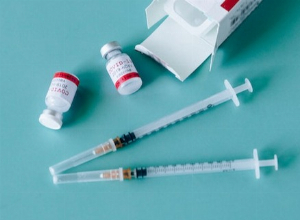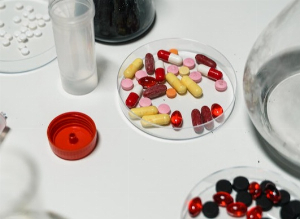Refractory thrombotic thrombocytopenic purpura (TTP): what is it?
Published Apr 27, 2023 • By Nada Doukkali
Thrombotic thrombocytopenic purpura (TTP) is a haematological condition, a type of thrombotic microangiopathy. The disease is characterized by periods of remission and relapses. Sometimes relapses become more complex, and do not respond to basic treatments; in this case the condition is referred to as refractory TTP.
What are the particularities of this form of the disease?
We explain it all in our article!

Definition of thrombotic thrombocytopenic purpura (TTP)
Thrombotic thrombocytopenic purpura is a rare blood disorder characterized by the absence of a protein, called ADAMTS13, which is necessary for normal coagulation. This deficiency leads to a decrease in the number of platelets in the bloodstream, which causes the formation of small clumps of platelets, which in their turn form small clots called "microthrombi".
This condition is characterized by the appearance of "flare-ups", which are highly dependent on the level of the ADAMTS13 protein. When the ADAMTS13 protein level is above a so-called "protective threshold", the disease is in a calm phase, or remission. A drop in this level, on the other hand, can lead to a crisis, known as a relapse.
The symptoms that herald these relapses can be diverse, the most common being the appearance of small red to purplish spots on the skin, the size of a pinhead (petechiae), progressing to more extensive purple ecchymoses (purpura), which indicate bleeding under the skin. These symptoms are often associated with anemia, pallor and fatigue, as well as cardiovascular, neurological and gastrointestinal problems due to the spreading of microthrombi throughout the body. Relapses of TTP are often life-threatening emergencies, and need to be managed as soon as possible by a team of specialists.
The disease has two origins:
- Congenital TTP (cTTP) is caused by a genetic defect, which does not allow the protein to be formed. The standard treatment for cTTP is based on plasma infusion to provide the body with the missing protein.
- Acquired, or immunological, TTP (iTTP) is an autoimmune disease caused by the synthesis of anti-ADAMTS13 antibodies. The standard treatment for iTTP is a combination of plasma exchange (or plasmapheresis) and steroids to destroy the antibodies that provoke the onset of the disease.
The prognosis for this condition has improved dramatically over the recent years, provided that a patient is regularly monitored by a healthcare team. Standard treatments are generally effective in treating relapses. However, some forms of the disease, particularly in the case of iTTP, do not show improvement after recommended treatments, known as "first-line treatments", have been taken: this is known as refractory TTP.
Particularities of refractory thrombotic thrombocytopenic purpura (TTP)
Thrombotic thrombocytopenic purpura (TTP) becomes refractory if, during a relapse, there is no improvement in symptoms or increase in the platelets level after 4-7 days of standard plasma exchange therapy. It can also be defined as a worsening of symptoms despite continued treatment within the same period of time.
Refractory relapses are reported to occur in 10 to 40% of patients. Risk factors for the development of these refractory forms include the patient's age (patients over 60 years old) and the presence of cardiological signs (chest pain and/or changes in heart rhythm) of the disease at the moment of the diagnosis.
Refractory TTP is therefore a persistent form of relapses, during which a patient does not respond to first-line treatments. The aim of healthcare professionals at the onset of these attacks is to raise the platelet and ADAMTS13 levels as quickly as possible, in order to avoid complications such as neurological or cardiac sequelae, or even coma.
The management of these particular episodes of the disease is debated by specialists, and requires particular attention by the care team, who need to define treatment protocols on a case-by-case basis depending on the patient. These treatment protocols may include:
- Immunosuppressants (rituximab, caplacizumab): they aim to suppress one or more functions of the immune system, including the ability to reduce its effects on the body. They are often used in addition to plasma exchange if the latter is not sufficient for the recovery or if the patient does not respond well to steroids.
- An increase in the number of plasma exchange sessions: it is possible to perform plasma exchange twice a day instead of once.
- Splenectomy: this is a surgical procedure to remove the spleen, one of the organs of the immune system, responsible for the immunity of blood cells and their regulation. The spleen is also the place where certain antibodies are formed. This operation is performed at the end of the protocol, often when steroids and immunosuppressants are not effective enough to restore the patient's health and alleviate the crisis.
- Immunomodulators: these are treatments that influence the regulation of the immune system, such as vincristine or cyclophosphamide. These drugs were among the first treatments for TTP with proven efficacy, and have been replaced over time. However, they can still be used if other types of therapy fail.
- Immunoadsorption: it is reserved as a last resort treatment for the most severe forms, as it allows to filter the patient's plasma in order to extract certain elements of the immune system. It is an invasive technique, and few studies have been carried out on this type of therapy to date. However, it is still part of treatment recommendations in some countries.
The latest studies on the subject show that the most promising treatments in the management of refractory forms would be the combination of plasmapheresis and the use of immunosuppressants. However, research is still ongoing, and scientific community is still seeking to reduce the risk of these persistent forms in order to improve the management if the disease and the quality of life of patients.
Give it a "Like" and share your thoughts and questions with the community in the comments below!
Take care!
Sources :
Protocole National de Diagnostic et de Soins : Purpura Thrombotique Thrombocytopénique - Haute Autorité de Santé
Prise en charge du purpura thrombotique thrombocytopénique réfractaire - E. Mariotte, E. Azoulay, Société de Réanimation de Langue Française
How I treat refractory thrombotic thrombocytopenic purpura - F.A. Sayani, C.S Abrams, Blood
Remission in acute refractory and relapsing thombotic thrombocytopenic purpura following rituximab is associated with a reduction in IgG antibodies to ADAMTS13 - M.Scully et al., British Journal of Haematology
Clinical cardiac involvement in thrombotic thrombocytopenic purpura: a systematic review - Hawkins et al., Transfusion
The Prognosis of Thrombotic Thrombocytopenic Purpura - Understanding TTP
Intérêt des immunoadsorptions pour les formes plasma-résistantes du Purpura Thrombotique Thrombocytopénique - Maillard et al., Néphrologie et Thérapeutique
Purpura Thrombotique Thrombocytopénique Réfractaire : Implications Cliniques et Thérapeutiques - Alice Blet, Université de Lorraine
Severe primary refractory thrombotic thrombocytopenic purpura in the post plasma exchange and rituximab era - Goranta et al., British Medical Journal
Purpura Thrombotique Thrombocytopénique, Argumentaire - HAS

 Facebook
Facebook Twitter
Twitter


